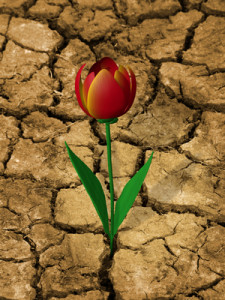10 Ways to Save Water in Your Yard
 As a homeowner or business owner, it may seem impossible to keep your yard attractive and thriving while trying to save water. Whether your region is going through a drought, city water prices are through the roof, or your area is implementing bans on watering yards, learning how to save water is becoming essential.
As a homeowner or business owner, it may seem impossible to keep your yard attractive and thriving while trying to save water. Whether your region is going through a drought, city water prices are through the roof, or your area is implementing bans on watering yards, learning how to save water is becoming essential.
Here are 10 ways you can save water in your own yard:
1. Implement Xeriscape Landscaping
For decades, xeriscape has been practiced by the landscaping industry. This concept allows you to have a livable outdoor space that doesn’t require major amounts of water. While xeriscapes still need to be regularly maintained, their smart designs save water, as well as your time and major backaches in the long run.
But don’t try to implement the principles of xeriscape alone. Your local landscaping company will be your best resource for establishing one. According to LandscapeNetwork.com, “For anyone contemplating a xeriscape, selecting an experienced designer is vital to success… The skill set in demand is a firm knowledge of both local native species used for landscaping, plus the array of imported species from dry climates around the world that expand our options considerably. There is no better way to make your home environmentally green and create a model landscape for water conservation.”
2. Plant Native Plants or Drought-Resistant Plants
Use native plants in your yard to save water. These plants are acclimated to your climate and are used to your region’s rainfall. Drought-resistant plants like daylilies contribute bright, cheery colors to your yard’s design without hogging water.
3. Use Mulch
Mulch such as wood chips or lava rock (not black plastic) is handy at preventing weeds. However, it also keeps moisture in the soil. It shades soil so that the soil’s temperature doesn’t heat up, translating to water savings.
4. Adjust Sprinkler Irrigation Systems
If you use sprinklers but they’re not adjusted properly, they won’t save water. Mist settings may cause water to blow in the wind or evaporate before it reaches your thirsty yard. Settings with larger droplets ensure that the water is reaching your plants. Make sure sprinklers are pointed to your lawn and not spurting water wastefully at sidewalks.
5. Yard Watering
The time of day that you water plants is important. Plan on watering around cooler times of the day like dusk or dawn. This will ensure that you save water since the water isn’t merely evaporating before it hits the ground. Don’t water when it’s windy.
6. Harvest Rain Water
Rainwater harvesting means you accumulate and deposit rainwater on-site so it doesn’t merely create run-off. For example, rain barrels can capture rain coming off your roof. You can save water and money simultaneously!
7. Mow the Grass
If you mow your grass too much, you could be contributing to water waste. Keep your main lawn around 3 inches tall so the soil retains water but water isn’t merely soaked up by tall grass (which can also harbor pests).
8. Pay Attention to Fertilization Times
Don’t fertilize your lawns during hot, dry weather. This could exacerbate current drought problems. Use a slow-release fertilizer to save water.
9. Create Decks and Paths
Add patio stones, gravel paths, and decks to decrease the amount of area in your yard that needs to be watered. Your landscaping company will have ideas on how these items will look great in your yard but contribute to a functional design too.
10. Form Ditches and Basins
Form ditches and basins around your plants. This practice will keep a well of water near your plants’ roots.
Tagged: gardening, save water, xeriscape
Both comments and pings are currently closed.





